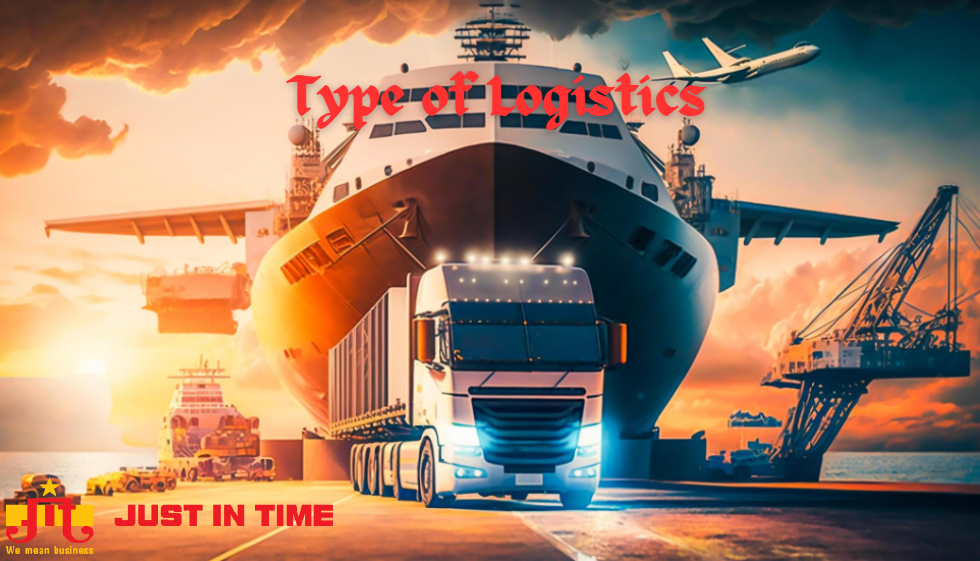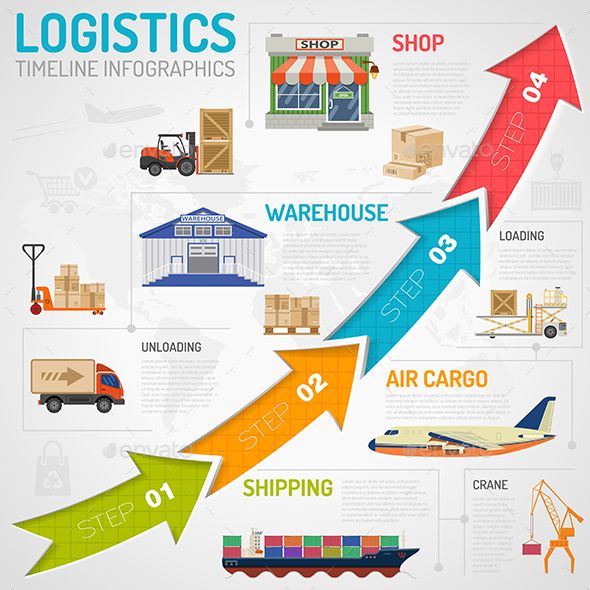Types of Logistics and Their Important Role in the Supply Chain
Posted on: 28/10/2024

Below is a detailed article for each type of logistics, to help readers gain a deeper understanding of each type, how it works, and its specific applications. The article also analyzes some strategies that businesses use to optimize logistics, along with real-life examples in the industry.
1. Inbound Logistics
Definition: Inbound logistics focuses on the movement of raw materials and products from suppliers into the business for production.
Key Activities:
-
Supplier Management: Establishing relationships with reliable suppliers, negotiating prices, and scheduling material deliveries.
-
Storage and Preservation: Controlling warehousing and preserving goods to ensure the quality of materials.
-
Inventory Control: Determining optimal inventory levels to reduce waste and storage costs.
Benefits:
-
Cost Reduction: Saves on production costs due to stable and well-organized supply.
-
Continuous Production: Ensures materials are readily available, avoiding production disruptions.
2. Outbound Logistics
Definition: Outbound logistics involves transporting finished products from the business to the end customer.
Key Activities:
-
Order Fulfillment: Packing, sorting, and delivering orders accurately and on time.
-
Distribution Management: Selecting carriers, optimizing routes, and choosing appropriate transportation modes.
-
Delivery Tracking: Monitoring delivery progress to ensure products reach customers safely and punctually.
Benefits:
-
Enhanced Customer Experience: Timely, reliable delivery improves customer satisfaction.
-
Reduced Delivery Costs: Optimized distribution saves on transportation costs.
3. Reverse Logistics
Definition: Reverse logistics manages the return of products from customers for repair, recycling, or disposal.
Key Activities:
-
Return Management: Handling return requests, assessing product conditions for potential reuse or disposal.
-
Recycling and Waste Management: Sorting and processing unusable products to meet environmental standards.
-
Repair and Refurbishment: Fixing minor issues for reuse, which saves costs and reduces waste.
Benefits:
-
Lower Production Costs: Reuse and repair conserve resources and save on expenses.
-
Environmental Responsibility: Projects a positive image through eco-friendly practices.
4. Third-Party Logistics (3PL)
Definition: 3PL involves outsourcing logistics services to external providers who handle some or all of a company’s logistics functions.
Key Activities:
-
Transportation Services: 3PL providers manage goods transport from warehouses to final delivery points.
-
Warehousing: Storage, preservation, and inventory management.
-
Order Processing: Sorting, packing, and managing customer orders accurately and promptly.
Benefits:
-
Reduced Investment in Infrastructure: Saves on logistics infrastructure and management.
-
Improved Efficiency: Expertise of 3PL providers optimizes the supply chain and saves time.
5. Fourth-Party Logistics (4PL)
Definition: 4PL is a model where a logistics service provider (often a consulting partner) manages the entire supply chain on behalf of the company.
Key Activities:
-
Comprehensive Supply Chain Management: Optimizing everything from production to final delivery.
-
Multi-Partner Collaboration: Coordinating with multiple logistics partners for seamless service.
-
Data Analysis and Optimization: Using data to make strategic decisions and improve efficiency.
Benefits:
-
Enhanced Operational Efficiency: Ensures continuous and seamless supply chain operations.
-
Long-Term Cost Optimization: Holistic logistics management reduces expenses and mitigates risks.

6. Cold Chain Logistics
Definition: Cold chain logistics involves storing and transporting temperature-sensitive products like food and pharmaceuticals under controlled conditions.
Key Activities:
-
Temperature Control: Maintaining the appropriate temperature range for each product type.
-
Specialized Transportation: Using vehicles equipped with temperature control systems to prevent spoilage.
-
Temperature Monitoring: Keeping track of product temperature throughout the transport process.
Benefits:
-
Preserves Product Quality: Ensures product integrity from production to end-user.
-
Reduces Waste Due to Spoilage: Minimizes loss by preventing damage to sensitive goods.
7. E-commerce Logistics
Definition: E-commerce logistics refers to the management and movement of goods for online sales.
Key Activities:
-
Inventory and Stock Management: Ensuring products are available to meet customer demand.
-
Last-Mile Delivery: Rapid, reliable delivery directly to customers.
-
Return Handling: Managing return requests for customer convenience and trust.
Benefits:
-
Improved Customer Satisfaction: Fast, flexible delivery options enhance customer experience.
-
Higher Operational Efficiency: Streamlined supply chain processes reduce shipping costs.
8. Domestic Logistics
Definition: Domestic logistics involves transporting and distributing goods within a country.
Key Activities:
-
Domestic Warehousing: Organizing storage facilities in strategic locations within the country.
-
Domestic Transportation: Optimizing routes and choosing suitable transportation modes for different regions.
-
Order Management: Ensuring orders are delivered accurately and on time.
Benefits:
-
Enhanced Domestic Delivery Speed: Faster, more reliable deliveries within the country.
-
Reduced Transportation Costs: Saves on logistics costs for local distribution.
9. International Logistics
Definition: International logistics involves the movement of goods across borders, covering import and export activities.
Key Activities:
-
Customs Management: Ensuring smooth and compliant customs processes.
-
International Transportation: Managing global freight via sea, air, or land.
-
Documentation Processing: Preparing and verifying invoices, contracts, and shipping documents.
Benefits:
-
Market Expansion: Enables businesses to enter international markets.
-
Efficient Cross-Border Operations: Ensures compliance with global regulations, reducing import-export costs.
10. Military Logistics
Definition: Military logistics handles the movement, storage, and distribution of supplies, equipment, and weapons for military operations.
Key Activities:
-
Supply of Essential Resources: Provision of supplies, equipment, and fuel.
-
Military Transport Coordination: Organizing and managing transportation suited to various terrains and time constraints.
-
Military Warehousing: Safely storing military equipment and weapons.
Benefits:
-
Ensures Operational Readiness: Maintains the availability of resources and equipment.
-
Enhanced Security: Efficiently manages resources with minimal risk.
11. Event Logistics
Definition: Event logistics is the organization and coordination of logistics activities for events, such as conferences, exhibitions, or sports tournaments.
Key Activities:
-
Event Equipment Transportation: Ensuring event equipment and tools are delivered to the venue.
-
Event Storage Management: Preparing and storing materials beforehand to facilitate setup.
-
Post-Event Solutions: Recovering, storing, or recycling materials after the event.
Benefits:
-
Professional Event Execution: Ensures smooth, organized event logistics.
-
Cost-Effective Resource Management: Optimizes costs and resources, ensuring successful event management.
Conclusion
Understanding the different types of logistics and choosing the right model for your needs will help businesses improve operational efficiency and create sustainable value. A well-managed supply chain not only saves costs but also increases the ability to quickly and accurately meet customer needs.